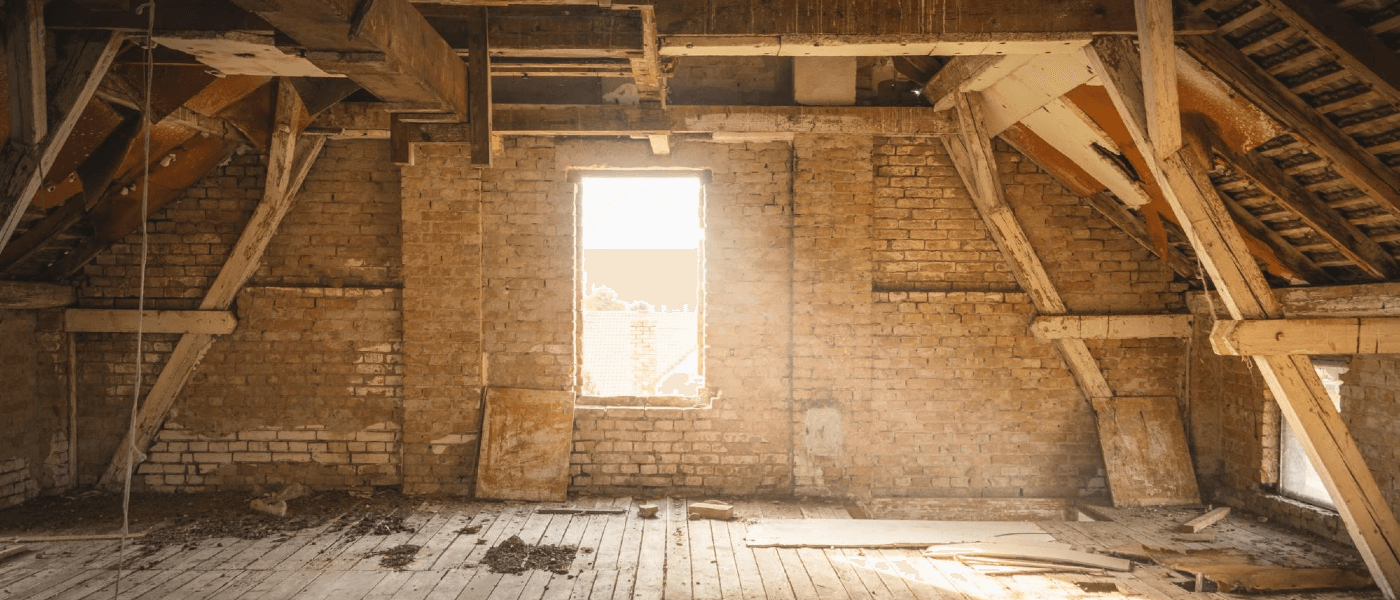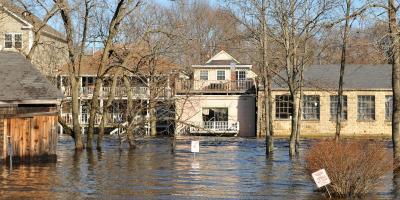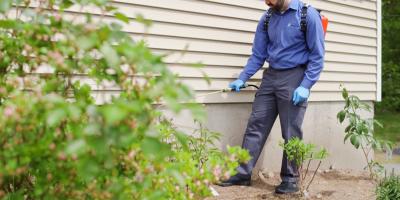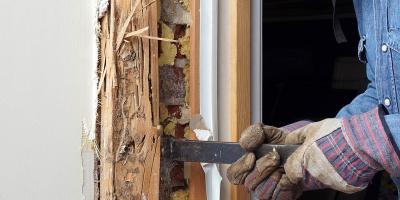Who’s Eating Your Home?

If you’re like most U.S. homeowners, your residence is probably your single greatest investment. When you suspect that something is literally eating you out of house and home, you’ll want to solve the problem with a quickness by calling in your pest management professionals.
That said, you’ll want to resist making the snap judgement that any and all structural damage is due to termites. Although that’s most people’s first thought when they see wood damage, there are actually several different types of insects that can cause it.
Often only a pest control professional who is familiar with each pest’s own trademark habits can identify the four main culprits behind structural wood damage: Carpenter ants are the most common; but powderpost beetles, carpenter bees and finally, yes, termites also make the list of possible offenders.
Identifying the Source of the Snacking
Wood-damaging bug sleuthing begins with an investigation of the wood itself to note exactly how it is damaged. If the damage occurs along the grain of the wood and creates a distinctive honeycomb pattern, the problem might very well be termites. Another telltale sign for this pest is the absence of sawdust, because termites are the only local insect that consumes the wood as opposed to simply excavating it. They also line their feeding galleries with bits of dried mud.
If, however, the wood is pockmarked with round, smooth holes, there’s a good chance carpenter bees are to blame. They bore directly into wood, as opposed to carving it out horizontally the way termites do. These holes are typically easy to find, as they’re fairly large: ¼ inch in diameter, and will be marked by sawdust around any fresh holes.
Powderpost beetles leave much of the same evidence as carpenter bees, but their holes are only a fraction of the size: about 1/16-1/32 of an inch in diameter. They, too, leave sawdust scraps, and create narrow, meandering tunnels throughout the wood during their grub-like larvae stage.
Taking the place as the single most common wood destroying insect in New England, carpenter ants leave behind many of the same telltale signs as the other pests in terms of debris, but are less picky about where they excavate and are more efficient about removing their deceased brethren. So if you see fragments of insulation or, better yet, little ant body parts collecting in the dust, carpenter ants are likely your culprit. They also come in greater numbers, and their colonies dig further into the structure than carpenter bees or powderpost beetles. If the wood damage is extensive, you very likely have carpenter ants.
Prioritize a Proactive Response
Regardless of what type of wood-destroying insect has decided to make a meal out of your home, the most important thing to remember is that the problem will not go away on its own. Every day the problem is left untreated is another day your home loses more value.
Meanwhile, left to their own devices, many of these pests will keep multiplying and multiplying until the problem becomes literally overwhelming. That’s another reason immediate intervention is key to solving the problem.
Ditch DIY, Partner with the Pros
Although it may be tempting to try some do-it-yourself methods before contacting a pest control professional, when it comes to structural damage to your home there are several reasons why you shouldn’t. The treatment protocols are immensely different for each pest, and they involve special understanding of the pest to not only correctly identify them, but also to effectively treat for them.
Eradicating termites effectively, for example, requires several products that are not available to anyone without a specialized license to handle them. And since the local species, subterranean termites, are often found nesting underground, it takes certain skill to effectively locate and bait exactly where the pests will be hiding without tearing up the foundation.
Carpenter ant control, on the other hand, is a very different process. Instead of baiting underground, it’s better to trick the foragers into eradicating the rest of the colony on your behalf, since you can’t usually get to them without breaking into the structure itself. This can only be done with the trained ability to study and understand the patterns and social structure of these pests, along with the proper products only available to licensed professionals.
Powderpost beetle and carpenter bee control require similarly intensive treatment methods. Given the fact that powderpost beetles love moisture, you’ll want to reduce the moisture content in any wooden structure to less than 20%, and confirm this level using a moisture meter.
Easier said than done, in many cases… and in the event where powderpost beetles do make their way in, they will likely require a treatment plan that is better left to a pest management professional. Often, badly-infested wood needs to be removed. In other words, this is not the pest problem to DIY.
Similar to powderpost beetles, carpenter bees like bare wood and will bore sizable round holes into these wooden areas in and around your home. Controlling carpenter bee populations on your property involves sealing off these holes, along with any other cracks or crevices that could attract carpenter bees. The most effective and quickest way to kick carpenter bees to the curb is to solicit the strategic support of your pest management professional.
Ultimately, dealing with any of these pests is best left to the professionals.
If you suspect wood-destroying insects have invaded your home, you don’t want to wait. Give us a call today to schedule an inspection with a pest control professional about what may be eating your home.



